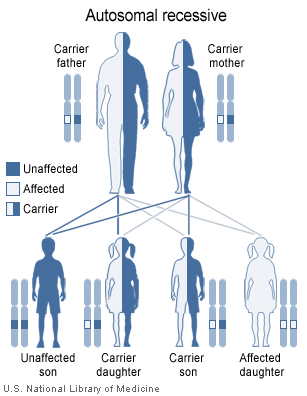Methemoglobinemia pathophysiology
|
Methemoglobinemia Microchapters |
|
Diagnosis |
|---|
|
Treatment |
|
Case Studies |
|
Methemoglobinemia pathophysiology On the Web |
|
American Roentgen Ray Society Images of Methemoglobinemia pathophysiology |
|
Risk calculators and risk factors for Methemoglobinemia pathophysiology |
Editor-In-Chief: C. Michael Gibson, M.S., M.D. [1]
Overview
Pathophysiology
Congenital (Hereditary) Methemoglobinemia
There are three main congenital conditions that lead to methemoglobinemia: 1. Cytochrome b5 reductase deficiency and pyruvate kinase deficiency 2. G6PD deficiency 3. Presence of abnormal hemoglobin.
Both cytochrome b5 reductase deficiency and pyruvate kinase deficiency can lead to NADH deficiency which in turn will lead to decreased ability to remove MetHb from the blood. Cytochrome b5 reductase deficiency is an autosomal recessive disorder with at least 2 forms that we know of. The most common form, is the Ib5R deficiency, where cyt b5 reductase is absent only in RBCs, and the levels of MetHb are around 10% to 35%. The second type, which is much less common, is the IIb5R, where MetHb varies between 10% and 15% and the cyt b5 reductase is absent in all cells. This form is associated with mental retardation, microcephaly, and other neurologic problems. The lifespan of the affected individuals is greatly affected and patients usually die very young.
Congenital deficiency in G6PD can lead to decreased levels of NADPH and thus compromising the function of the diaphorase II enzyme system.
Abnormal hemoglobins like Hb M, an autosomal dominant condition, can also lead to methemoglobinemia. Here we observe not only impaired oxygen binding due to oxidation of iron to its ferric state (Fe3+), caused by amino acid replacement in the heme molecule, but also inability of the protective enzyme systems to reduce the iron to its normal ferrous state (Fe2+).

Acquired/Toxic methemoglobinemia
The protective enzyme systems normally present in red blood cells maintain methemoglobin levels at less than one percent of the total hemoglobin in healthy people. Exposure to exogenous oxidizing drugs and their metabolites (such as benzocaine, dapsone andnitrates) may accelerate the rate of formation of methemoglobin up to one-thousandfold, overwhelming the protective enzyme systems and acutely increasing methemoglobin levels. Other classical drug causes of methaemoglobinaemia include antibiotics (trimethoprim, sulphonamides and dapsone), local anaesthetics (especially lignocaine and prilocaine), and others such as aniline dyes, metoclopramide, chlorates and bromates.
Infants under 6 months of age are particularly susceptible to methemoglobinemia caused by nitrates ingested in drinking water, dehydration usually caused by gastroenteritis with diarrhea, sepsis and topical anesthetics containing benzocaine or prilocaine. Nitrates that are used in agricultural fertilizers leaked into the ground and may contaminate well water. The current EPA standard of 10 ppm nitrate-nitrogen for drinking water is specifically designed to protect infants.